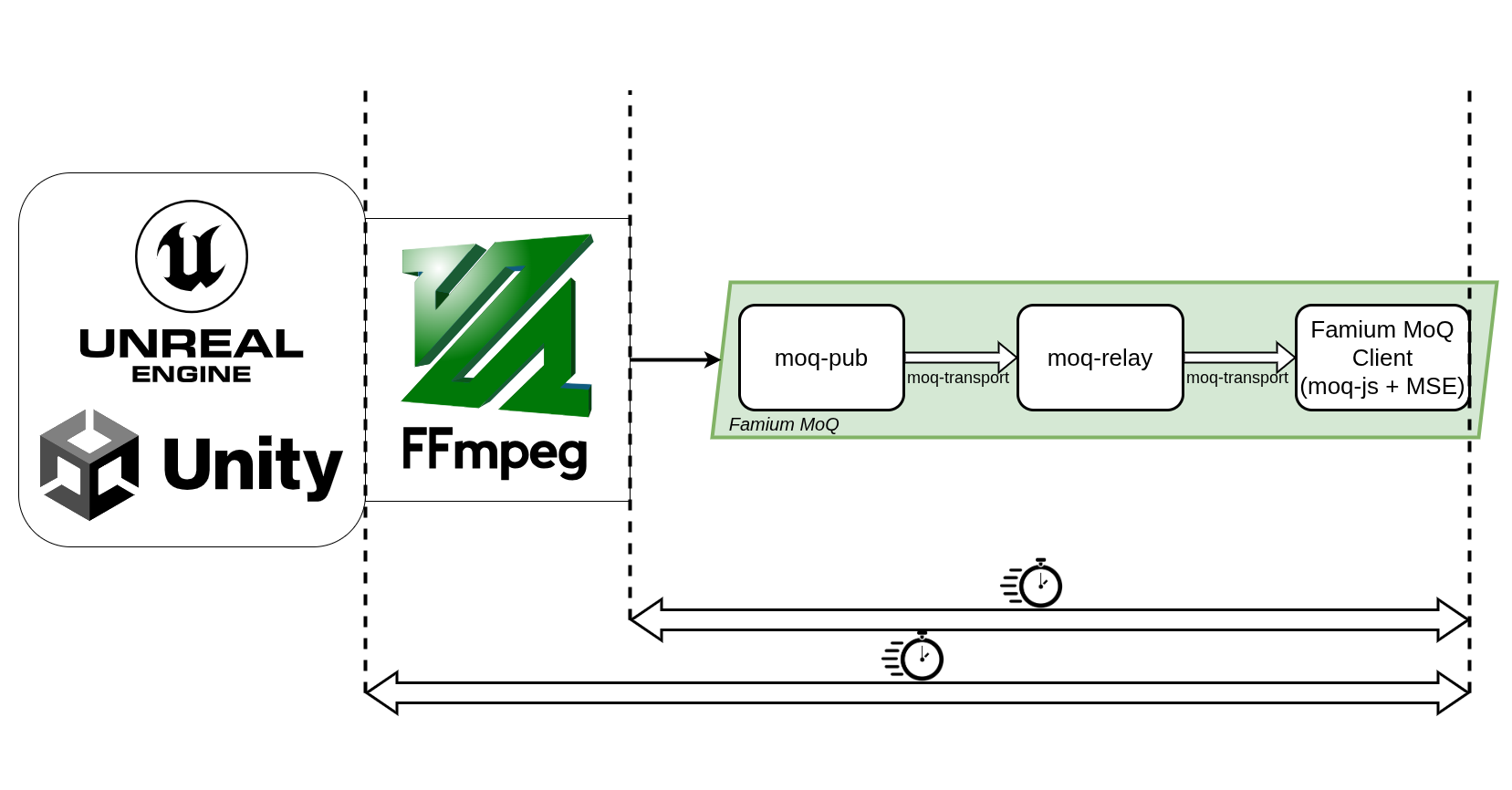
FAMIUM MoQ leverages standardized protocols like WebTransport, HTTP/3 and QUIC to minimize connection overhead and ensure reliable retransmission. WebTransport’s browser-oriented API enables real-time interaction, going beyond what is typically possible with traditional HTTP. These technologies form a foundation that makes ultra-low-latency media streaming more achievable:
Comparing HTTP/1.1 and QUIC
- Measurement setups show faster startup times using QUIC, often improving QoE for both live and on-demand scenarios.
- QUIC avoids head-of-line blocking, especially important for maintaining seamless playback.
Enhanced Throughput Estimation
- Potential synergy between server-based logs (RTT, qlog) and dash.js-level algorithms.
- Improves adaptive bitrate (ABR) decisions in dynamic, low-latency applications.
dash.js – Official Reference Player
- Maintained by Fraunhofer FOKUS and the DASH Industry Forum, employing MSE and EME for secure, adaptive streaming.
- Extended to leverage low-latency pipelines (e.g., WebTransport) for modern streaming applications.

